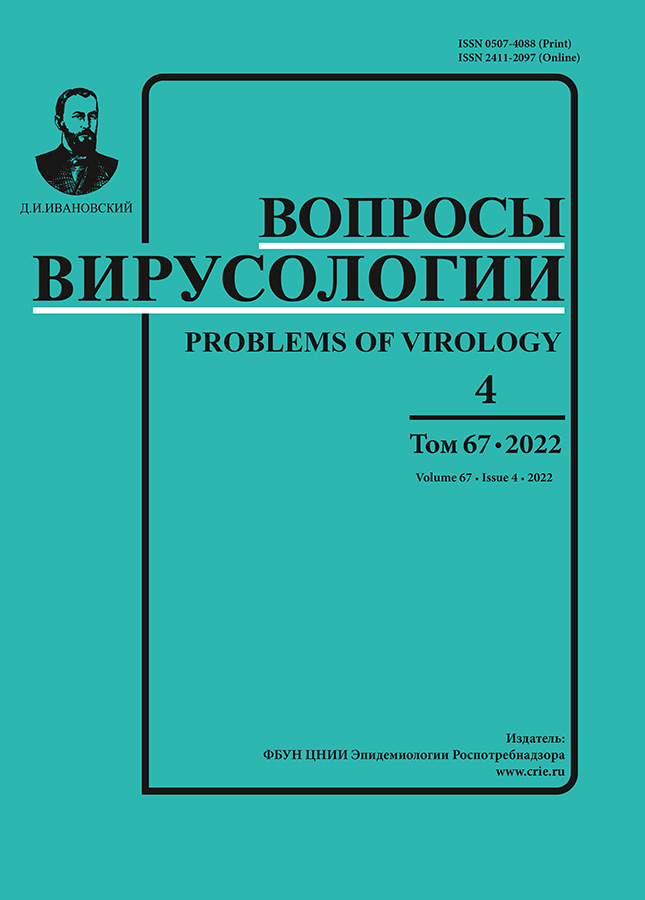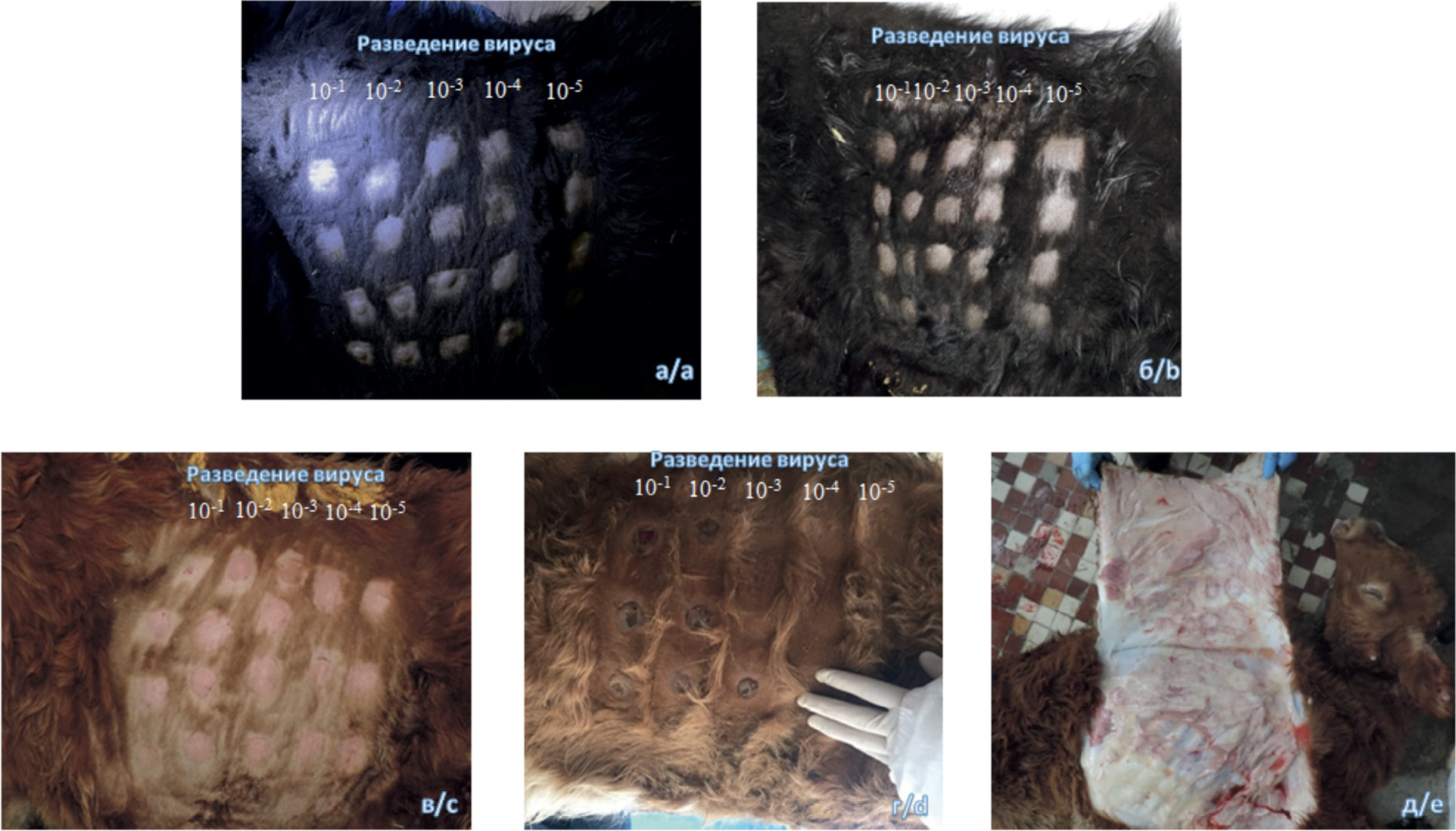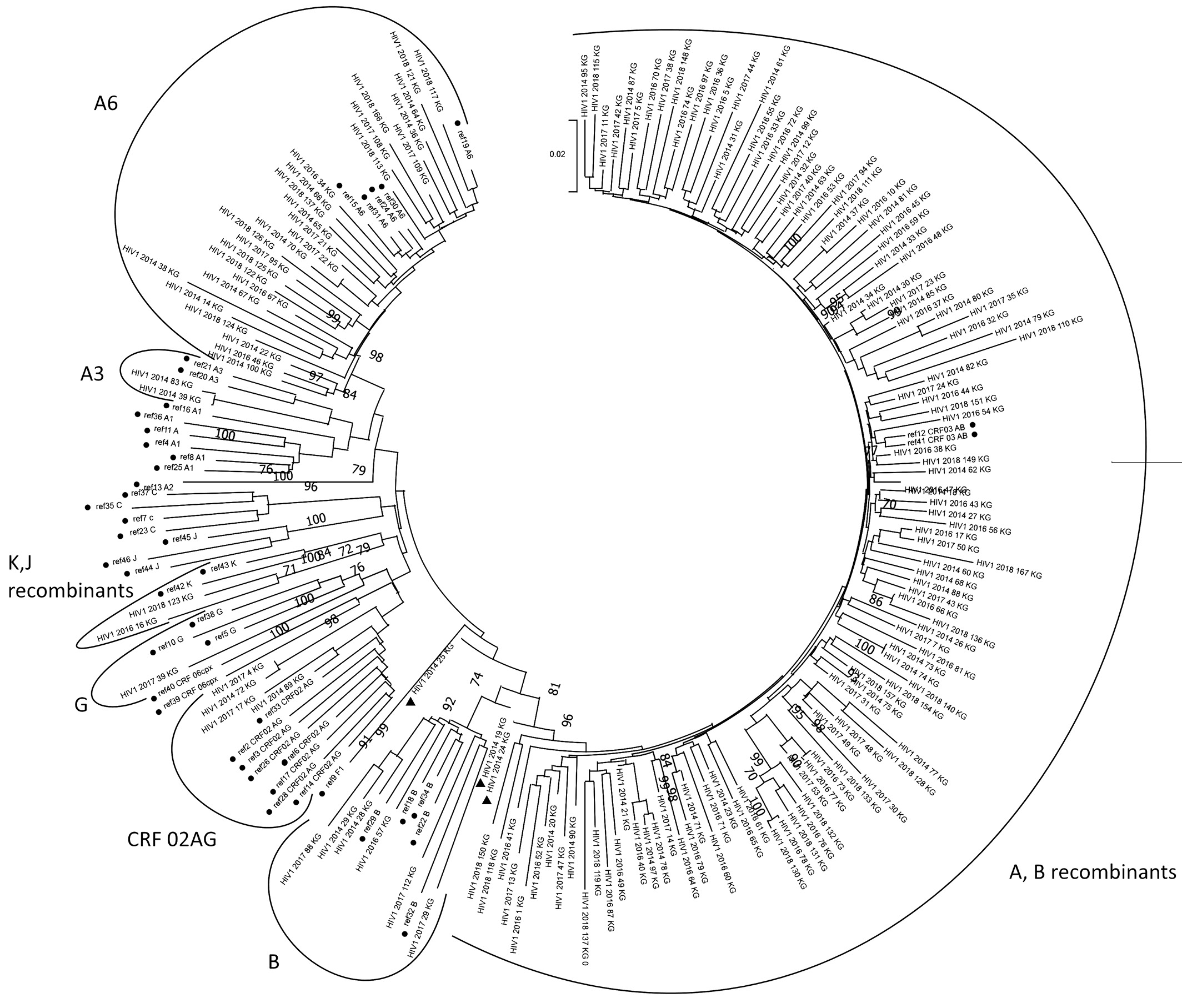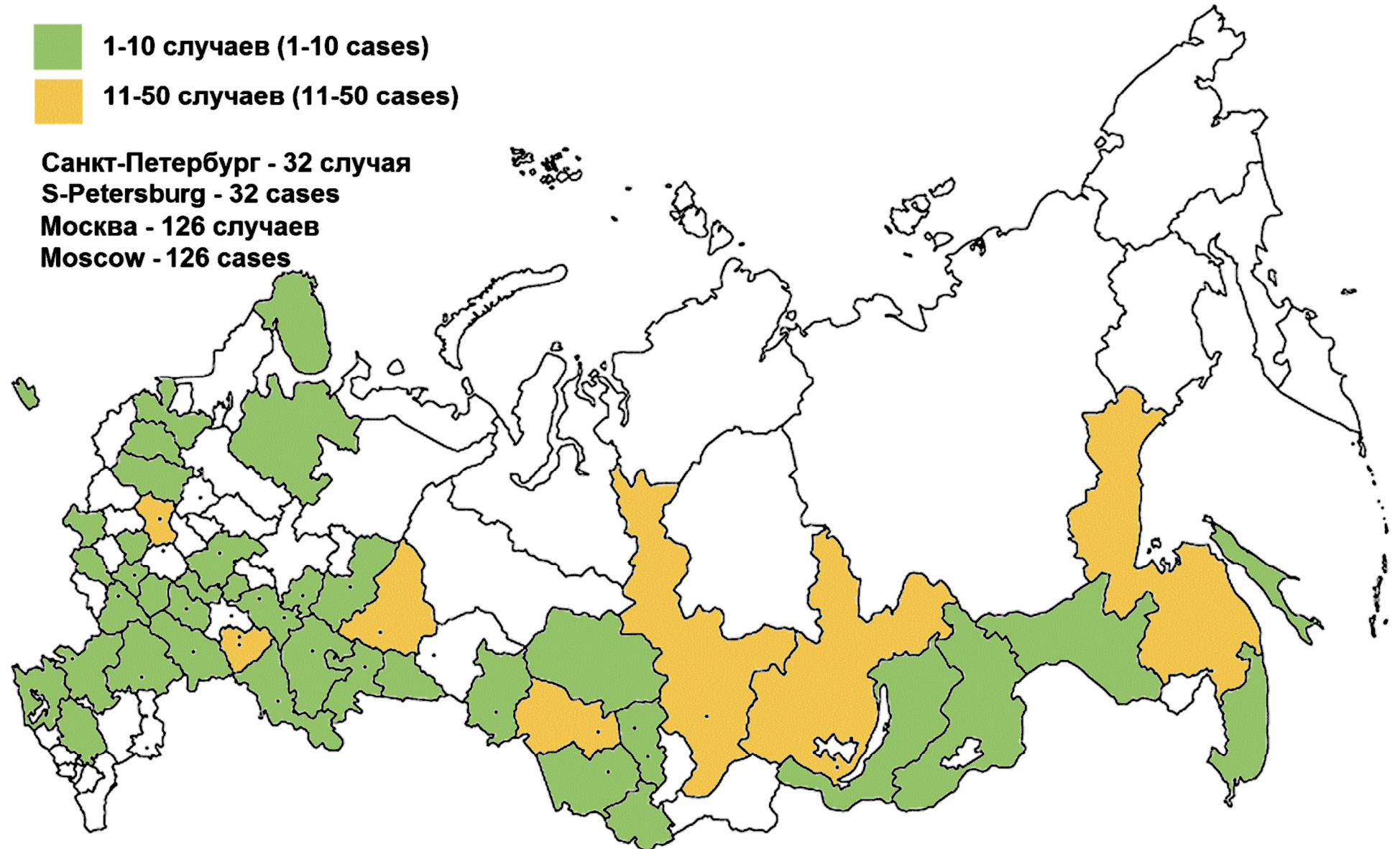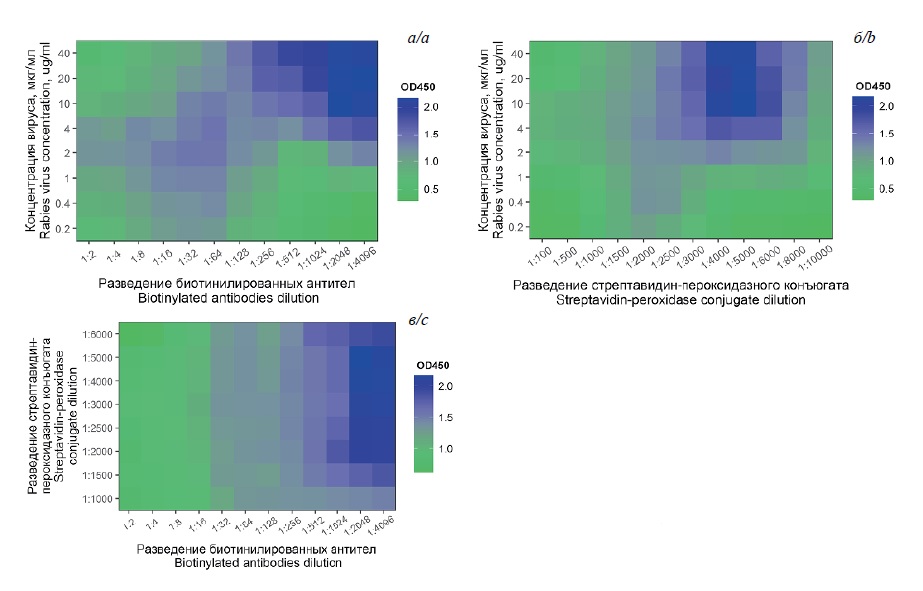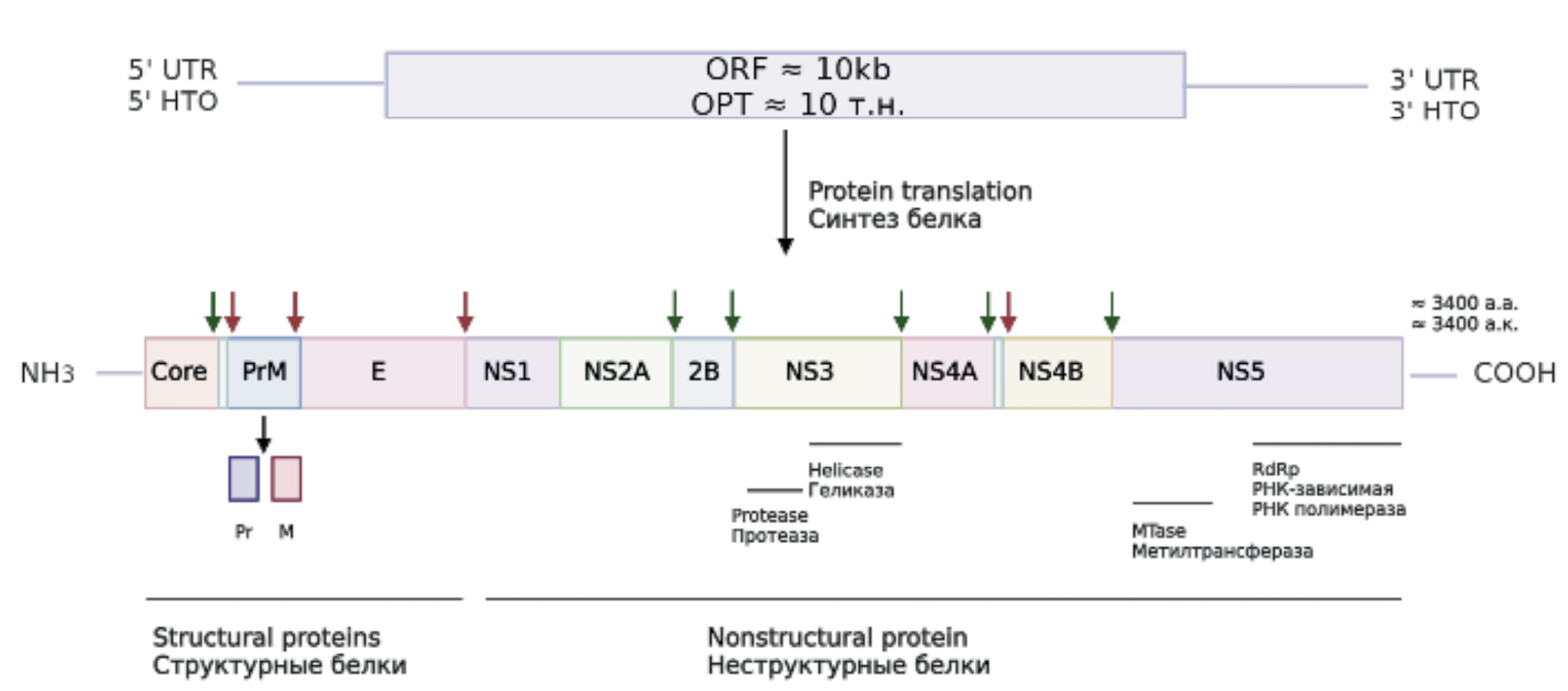Том 67, № 4 (2022)
- Год: 2022
- Дата публикации: 16.11.2022
- Статей: 8
- URL: https://virusjour.crie.ru/jour/issue/view/57
Весь выпуск
ОБЗОРЫ
Эпштейна–Барр вирусная инфекция – глобальная эпидемиологическая проблема
Аннотация
Число исследований, посвящённых Эпштейна–Барр вирусной инфекции (ВЭБ-инфекция), в последние годы растёт. Однако все они касаются клинических аспектов данной проблемы. Вопросы эпидемиологии остаются практически не изученными. Обзор отечественных и иностранных публикаций показал, что на современном этапе имеется высокая интенсивность эпидемического процесса ВЭБ-инфекции как в России, так и за рубежом. Основными показателями эпидемиологического неблагополучия являются убиквитарное распространение возбудителя и рост заболеваемости инфекционным мононуклеозом на протяжении последних лет. На ухудшение эпидемической ситуации по ВЭБ-инфекции оказывает влияние изменение иммунологической реактивности различных групп населения за счёт распространения ВИЧ, вирусов гепатита В и С, возбудителя туберкулёза и SARS-CoV-2. Вышеизложенное позволяет отнести проблему к числу глобальных и определяет необходимость оперативного внедрения системы эпидемиологического надзора за ВЭБ-инфекцией и оптимизации комплекса профилактических и противоэпидемических мероприятий. Снижение бремени ВЭБ возможно только при консолидированном участии специалистов разного профиля.
 265-277
265-277


Перспектива применения препаратов на основе явления РНК-интерференции против ВИЧ-инфекции
Аннотация
На сегодняшний день вирус иммунодефицита человека (ВИЧ, HIV) является одной из наиболее актуальных проблем мирового здравоохранения. С момента открытия в 1978 г. он унёс жизни более 35 млн человек, а число инфицированных сегодня достигает 37 млн человек. При отсутствии высокоактивной антиретровирусной терапии ВИЧ-инфекция характеризуется неуклонным снижением количества CD4+ Т-лимфоцитов, однако её проявления способны затронуть центральную нервную, сердечно-сосудистую, пищеварительную, эндокринную и мочеполовую системы. Одновременно с этим особую опасность представляют осложнения, индуцированные представителями патогенной и условно-патогенной микрофлоры, которые могут привести к развитию сопутствующих бактериальных, грибковых и вирусных инфекций. Следует учитывать, что важной проблемой является возникновение вирусов, устойчивых к традиционным лекарственным препаратам, а также токсичность самих лекарственных средств для организма. В контексте настоящего обзора особый интерес представляет оценка перспективности создания и клинического применения препаратов на основе малых интерферирующих РНК, направленных на подавление репродукции ВИЧ, с учётом опыта подобных исследований, проведённых ранее. РНК-интерференция – каскад регуляторных реакций в эукариотических клетках, в результате которого происходит деградация чужеродной матричной РНК. Разработка препаратов на основе механизма РНК-интерференции позволит преодолеть проблему вирусной резистентности. Наряду с этим данная технология позволяет оперативно реагировать на случаи возникновения вспышек новых вирусных заболеваний.
 278-289
278-289


ОРИГИНАЛЬНЫЕ ИССЛЕДОВАНИЯ
Альтернативные подходы к диагностике африканской чумы свиней на территории Российской Федерации в 2017–2021 гг.
Аннотация
Введение. В рамках борьбы с африканской чумой свиней (АЧС) на территории Российской Федерации проводятся мониторинговые исследования проб от свиней и кабанов. В ходе рутинной серологической диагностики специфические антитела к вирусу выявляют лишь в единичных образцах. При этом известно об обнаружении на территории России и сопредельных стран изолятов АЧС с ослабленной вирулентностью.
Целью данной работы являлись определение возможности использования альтернативных проб и оценка эффективности используемых методов диагностики АЧС у восприимчивых животных на территории РФ.
Материалы и методы. В работе использовали биоматериал, полученный в полевых условиях и от экспериментально инфицированных животных.
Результаты. Показано, что комплексное тестирование (ПЦР-РВ и ТФ-ИФА) является более эффективным способом диагностики хронической и бессимптомной формы АЧС, чем их раздельное использование. Продемонстрирована возможность и эффективность использования альтернативных образцов в диагностике. Подтверждена высокая диагностическая чувствительность иммунопероксидазного метода, его способность выявлять антитела на более ранних, чем ТФ-ИФА, сроках и возможность использования расширенного спектра проб. Антитела к вирусу АЧС выявлены у домашних и диких свиней в пяти федеральных округах РФ. Установлено, что в пробах от инфицированных свиней, отрицательных в ПЦР-РВ, могут быть выявлены специфические антитела к вирусу АЧС при их серологическом исследовании. Наличие генома в образцах суставных тканей указывает на возможность животных с хронической и бессимптомной формой течения болезни выступать переносчиками инфекции. Обнаружение антител в пробах от отстрелянных кабанов (отрицательных или сомнительных в ПЦР-РВ) предполагает существование животных, выживших после инфицирования АЧС.
Заключение. Полученные данные требуют пересмотра стратегии надзора за АЧС, внедрения комплексных методов диагностики, направленных на параллельное обнаружение генома и антител и допускающих исследование образцов, альтернативных сыворотке, для обнаружения антител и (или) отбора и направления образцов сыворотки крови, в том числе от кабанов.
 290-303
290-303


Определение оптимальной иммунизирующей дозы гетерологической вакцины вируса оспы коз (Poxviridae: Chordopoxvirinae: Capripoxvirus) против узелкового дерматита
Аннотация
Введение. Узелковый дерматит, оспа овец и оспа коз являются опасными заболеваниями домашних жвачных животных, оказывающими губительное воздействие на животноводство в эндемичных регионах, нанося колоссальный экономический ущерб государству. Представители рода каприпоксвирусов антигенно схожи и могут использоваться в качестве вакцины для трёх инфекций, как в случае с представителями рода ортопоксвирусов, куда входят вирусы натуральной оспы, оспы обязан, оспы коров, составляющие единое семейство Poxviridae.
Материалы и методы. В данной работе использованы вакцинный штамм G20-LKV вируса оспы коз и вирулентный штамм НИИПББ-2019/К вируса узелкового дерматита. Опыты проводили на клинически здоровом, серонегативном к поксвирусам крупном рогатом скоте (КРС) породы «Казахская белоголовая» 6–8-месячного возраста. При работе использовались вирусологические и серологические методы исследований.
Результаты. Все иммунизированные животные, получившие разные дозы вакцины, проявили устойчивость к контрольному заражению вирулентным вирусом узелкового дерматита КРС без проявления каких-либо клинических признаков болезни. У животных, получивших наименьшие дозы вакцины (15 000, 30 000 и 40 000 ТЦД50), в месте введения не наблюдалось нежелательных явлений, кожной (припухлость) и температурной реакции. А у вакцинированных высокими дозами препарата (60 000 и 80 000 ТЦД50) отмечалась реакция в виде припухлостей в месте введения, которые рассасывались в течение 3–4 суток. Контрольные животные, инфицированные вирулентным вирусом, проявляли клинические признаки болезни узелкового дерматита КРС.
Заключение. Вакцина, приготовленная на основе штамма G20-LKV вируса оспы коз, обладает протективными свойствами в отношении заражения КРС вирулентным вирусом узелкового дерматита. Иммунизирующая доза вакцин от 15 000 до 80 000 ТЦД50 зависит от эпизоотической ситуации узелкового дерматита в определенный момент в конкретном регионе.
 304-309
304-309


Генетическое разнообразие вируса иммунодефицита человека (ВИЧ-1) в Калининградской области
Аннотация
Введение. Как известно на сегодняшний день, эпидемия ВИЧ-инфекции в Калининградской области преимущественно была связана с распространением рекомбинантной формы вируса (CRF03_AB), однако регулярные заносы ВИЧ из других стран и частей света создали благоприятные условия для формирования и распространения его разнообразных рекомбинантных форм.
Наиболее полная информация о разнообразии рекомбинантных форм в регионе необходима для понимания структуры лекарственной устойчивости (ЛУ), так как влияние ассоциированных с ней мутаций на приспособленность вируса может быть неодинаковым для разных субтипов, причём рекомбинантные формы могут сочетать в своём геноме наиболее удачные паттерны мутаций, что позволит ВИЧ с большей эффективностью противостоять антиретровирусной терапии.
Цель работы. Изучение генетического разнообразия ВИЧ-1 в Калининградской области.
Материалы и методы. Исследованы 162 образца плазмы крови, полученные от пациентов из Калининградской области как с подтверждённой вирусологической неэффективностью антиретровирусной терапии, так и с впервые выявленной ВИЧ-инфекцией. Для обратной транскрипции и амплификации ВИЧ использовали диагностический набор «АмплиСенс HIVResist-Seq» (ЦНИИЭ, Россия).
Результаты и обсуждение. Доминирующими в группе являлись различные рекомбинанты между субтипами А и В (74%), в том числе CRF03_AB и субтипом А (33,95%) и рекомбинантная форма, схожая с СRF03_AB (CRF03_AB-like (13,58%). Среди «чистых» субтипов вируса доминирует характерный для территории Российской Федерации суб-субтип – А6 (16,67%), одновременно с ним циркулируют субтипы В (3,70%) и G (1,23%).
Были выявлены 96 пациентов (59,26%) хотя бы c одной мутацией, ассоциированной с ЛУ к антиретровирусным препаратам.
Заключение. Выявленное разнообразие субтипов и рекомбинантных форм вируса указывает на то, что в исследуемом регионе продолжается активный процесс формирования новых рекомбинантов, причём между как уже существующими рекомбинантными формами и «чистыми» субтипами, так и между «чистыми» субтипами.
 310-321
310-321


Сравнительная характеристика завозных случаев классической и геморрагической форм лихорадки денге в 2009–2019 гг.
Аннотация
Введение. В России в качестве статистической системы учёта заболеваний законодательно утверждена Международная классификация болезней 10-го пересмотра (МКБ-10), предусматривающая выделение двух форм лихорадки денге – классической и геморрагической (ГЛД). В открытых источниках официальных статистических данных о соотношении форм заболевания не публикуется. Недостаточность сведений о реальном соотношении форм лихорадки денге затрудняет возможность объективной оценки факторов, обусловливающих тяжесть этого заболевания.
Цель – оценка клинико-эпидемиологических особенностей классической и геморрагической лихорадки денге у больных, госпитализированных в 2009–2019 гг. в Инфекционную клиническую больницу № 1 г. Москвы.
Материалы и методы. Проведено ретроспективное когортное исследование: проанализирована база данных госпитализированных больных, 391 медицинская карта пациентов с диагнозом «лихорадка денге». Оценивались половые, возрастные характеристики, география поездок с учётом предшествующих визитов пациентов в эндемичные регионы, серотип вируса денге. Для определения первичной и повторной инфекции проведён анализ показателей IgG к вирусу денге на 1–5-е сутки заболевания. Для сравнения показателей рассчитывали 95% доверительные интервалы для долей, медианы и интерквартильный размах. Значимость различий между независимыми выборками для оценки качественных характеристик осуществляли при помощи критериев χ2, отношения шансов, для оценки количественных характеристик – критерия Манна–Уитни. Различия считали статистически значимыми при р ≤ 0,05.
Результаты. Доля больных лихорадкой денге составила 14,9% от всех госпитализированных с лихорадочными заболеваниями, развившимися после международных поездок. ГЛД диагностирована у 15,7% больных лихорадкой денге. Значимо чаще ГЛД развивалась у женщин, а также у лиц после повторного посещения эндемичных регионов. Но ГЛД также была диагностирована у 10,9% лиц, впервые посещавших тропические страны. Мы не установили значимых различий развития ГЛД в зависимости от возраста и серотипа вируса денге. У ряда пациентов, ранее не выезжавших в эндемичные регионы, были обнаружены IgG к вирусу денге, что может свидетельствовать о предшествующем инфицировании родственными флавивирусами.
Заключение. Установлено, что в наиболее посещаемых россиянами регионах имеет место циркуляция всех серотипов вируса денге с ежегодной сменой преобладающего серотипа.
 322-330
322-330


Тест-система на основе конкурентного иммуноферментного анализа для выявления антител к вирусу бешенства животных (Rhabdoviridae: Lyssavirus)
Аннотация
Введение. Основным направлением профилактики бешенства является вакцинация домашних и диких плотоядных животных. Для рутинной оценки эффективности антирабической вакцинации Международным эпизоотическим бюро (МЭБ) рекомендован иммуноферментный анализ (ИФА). Актуальной задачей остаётся разработка модификаций ИФА с большей диагностической специфичностью (ДС) и чувствительностью (ДЧ).
Цель работы – конструирование и валидация тест-системы на основе конкурентного ИФА (кИФА) для выявления антител к вирусу бешенства (ВБ).
Материалы и методы. Разработку тест-системы проводили в соответствии с рекомендациями МЭБ. Определяли дозу ВБ для сенсибилизации планшетов, состав блокирующего буфера; оптимальные разведения компонентов; порядок интерпретации результатов ИФА.
Результаты. Повторяемость результатов кИФА в рамках одной лаборатории была удовлетворительной: коэффициент вариации – 7,95–13,61%, коэффициент детерминации (КД) между результатами реакции нейтрализации (FAVN) и кИФА – 0,988, p < 0,001. Нижний порог обнаружения антител составил менее 0,02 МЕ/мл. Разработанная тест-система не демонстрировала кросс-реактивности в отношении антител к вирусу чумы плотоядных, вирусу парагриппа, парвовирусу, коронавирусу, аденовирусу собак (I и II серотипа). При исследовании 137 сывороток крови собак ДС и ДЧ кИФА составили 83,1 и 94,9% соответственно, КД между результатами кИФА и FAVN – 0,968, p < 0,001.
Обсуждение. Диагностикумы для определения уровня антител к ВБ на основе непрямого ИФА недостаточно чувствительны по сравнению с референс-тестами. Оптимальным решением являются варианты кИФА с применением биотинилированных антител. Разработанная тест-система по ДС и ДЧ не уступает коммерческой тест-системе кИФА BioPro ELISA Rabies Ab: ДС 66,7%, ДЧ 94,4%.
Заключение. Таким образом, разработанная тест-система на основе кИФА может быть использована для выявления антител к ВБ в сыворотке крови собак при оценке эффективности программ массовой вакцинации.
 331-340
331-340


В ПОМОЩЬ ВИРУСОЛОГУ
Разработка способа выявления специфических антител к белку Е вируса жёлтой лихорадки (Flaviviridae: Flavivirus)методом иммуноферментного анализа
Аннотация
Введение. Жёлтая лихорадка (ЖЛ) остаётся одной из самых распространённых природно-очаговых инфекционных болезней в мире. В связи с возрастающим туристическим потоком в страны, эндемичные по ЖЛ, обнаружением на территории южных регионов России устойчивых популяций комаров видов Aedes aegypti и Ae. albopictus, являющихся основными переносчиками вируса ЖЛ (ВЖЛ), и тем фактом, что в медицинских учреждениях нашей страны можно получить живую аттенуированную вакцину против ЖЛ, но нет возможности оценки эффективности вакцинации, возникает вопрос о разработке и внедрении в практику диагностических наборов для выявления антител к возбудителю методом иммуноферментного анализа (ИФА).
Цель работы – разработка способа выявления специфических антител класса IgG к белку Е ВЖЛ методом ИФА и оценка его диагностических характеристик.
Материалы и методы. Методом обратной транскрипции на матрице РНК ВЖЛ, выделенного на клеточной культуре Aedes albopictus clone C6/36, синтезирована специфичная кДНК и амплифицирован участок генома белка Е ВЖЛ, который был клонирован в плазмиду pET160 (Thermo Fisher Scientific, США). Полученный фрагмент гена использовали в качестве ДНК-матрицы для создания рекомбинантного аналога третьего домена белка Е ВЖЛ в клетках Escherichia coli (BL-21(DE3)). Далее произведена оценка иммуногенности полученного антигена и оптимизация условий анализа.
Результаты. Определены оптимальные условия наработки полученного рекомбинантного белка Е ВЖЛ, подтверждена его специфичность иммунологическими методами (вестерн-блоттинг и ИФА), подобраны сорбционные буферы и блокирующие растворы, проведён анализ чувствительности и специфичности рекомбинантного антигена и антител к ВЖЛ.
Заключение. Был разработан способ выявления специфических антител класса IgG к белку Е ВЖЛ методом ИФА. Данный диагностический набор может использоваться как для изучения протективных свойств вакцины против ЖЛ, так и для выявления завозных случаев инфекции на неэндемичных территориях.
 341-350
341-350









